No matter what niche of photography you are in, there is a good chance you are going to end up outside, caught in the rain or a wet environment sooner or later.
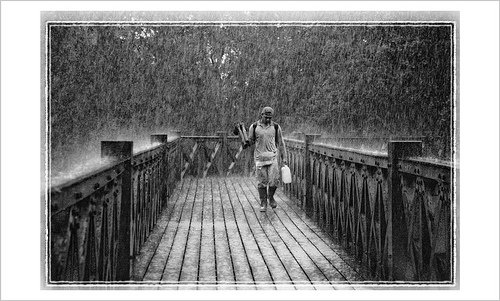
The people who predict the weather are cruel at best and while they are a good guide, you should always be prepared when shooting outside. Here's 10 tips for shooting in the rain and wet situations.
Be prepared. The old boyscout motto holds true for everyone. At the very least, a large ziploc bag (or disposable poncho) or two in your camera bag takes up no room and can be used in a pinch to cover your camera. Depending on which lens you have, you can actually shoot through a ziploc bag as a last ditch effort to get the shot.
Invest in rain gear. If you're an outdoor shooter with sports, landscapes, people or always keep a camera on you, your chances of getting caught in the rain are even higher. Many companies make specific bags for different DSLR models that are designed to use most of the functions on the camera and offer a better shoot-through plastic protector compared with the ziploc bag. If you're planning on hiking or even going for long walks, buy a rain poncho for yourself and always keep it in your bag. They are cut generously enough to cover you and your backpack or messenger style bag and help protect it from the elements.
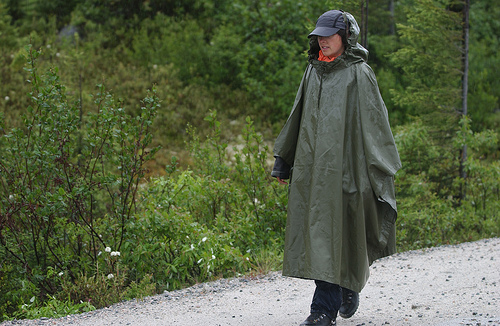
Read the labels. Most camera specific gear for shooting in the rain is water resistant. That does not mean waterproof. Don't go jump into the lake with a water resistant bag and expect your gear to stay dry.
Buy a wet-weather camera. Several companies make point and shoot cameras that produce very nice photos and are waterproof up to 30′ without any extra case needed. If you frequently are in or around pools, lakes, oceans or other wet zones investing in a dedicated wet camera could be the smartest choice.
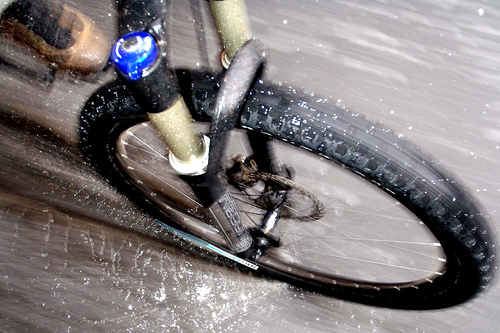
Snow is wet. Shooting in snow can have as much effect on your camera gear as a light mist so treat snow the same as rain.
Let it dry completely. One of the least advertised features of waterproof point and shoot cameras is that they are only waterproof while the batter / memory card door is closed. When the time comes to get the memory card out and move the photos to your computer, wait until the camera has completely dried. I'd suggest at least eight full hours – more if you can wait.
Rinse it off. If you take camera gear, waterproof point and shoot or bagged DSLRs to the beach or in salt water, rinse them off with clean fresh water before they dry. The salt in the water can cause corrosion and dry-rot the rubber gaskets that help seal the memory card door.
Bag your bag. Most camera bags are not waterproof, although some premium bags come with a rain cover, it's often the one accessory that's tossed to the side after purchasing it. A large garbage bag will cover a backpack or messenger style bag to help protect the contents.
Keep silica gel in your bag. Those small pouches that say do not eat that come in bottles of vitamins and sneaker boxes are silica gel. They are used to capture moister and help keep things dry. Get a couple and keep them in your camera bag.
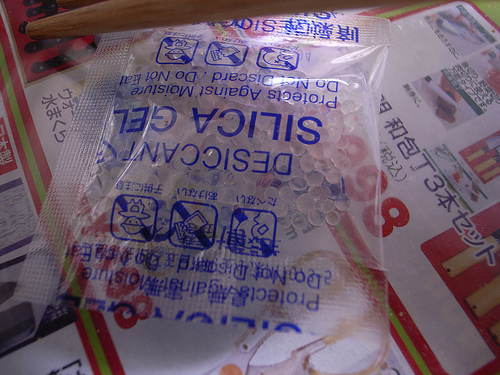
Look for the reflections. Rain collecting in streets can cause some beautiful reflections. Point your lens down and look for reflections in the water of surrounding scenery and frame accordingly.
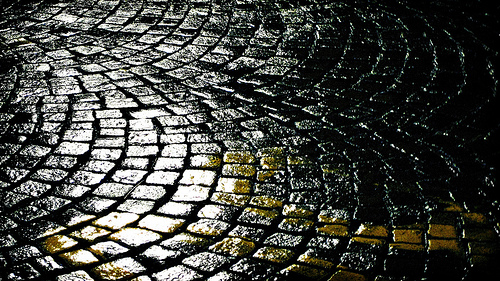
Take a friend along. Take a friend with you to help hold an umbrella, and to be a second set of eyes to help look for reflections, patterns and subject matter.
Increase your ISO. With the rain come clouds which block the sun – these darker shooting situations are similar to shooting near dusk, so a higher ISO sensitivity is needed.
Those rainy days don't have to be boring and keep you confined inside putting puzzles together. With some proper planning you can have a great time outside, or be prepared for an unexpected turn in the weather while you are outside with these simple tips.



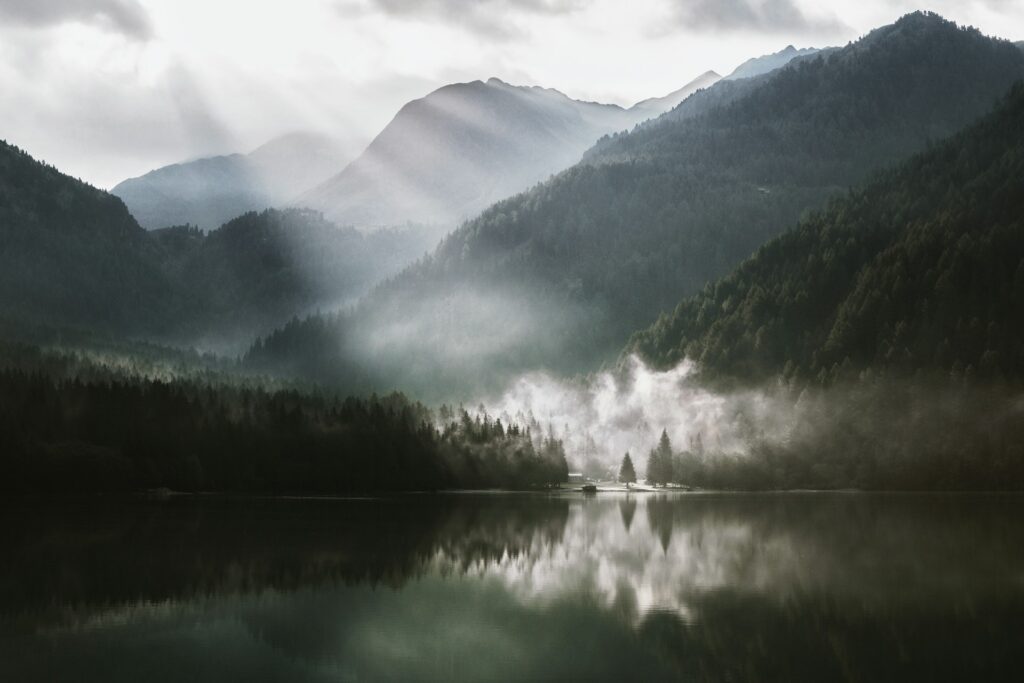
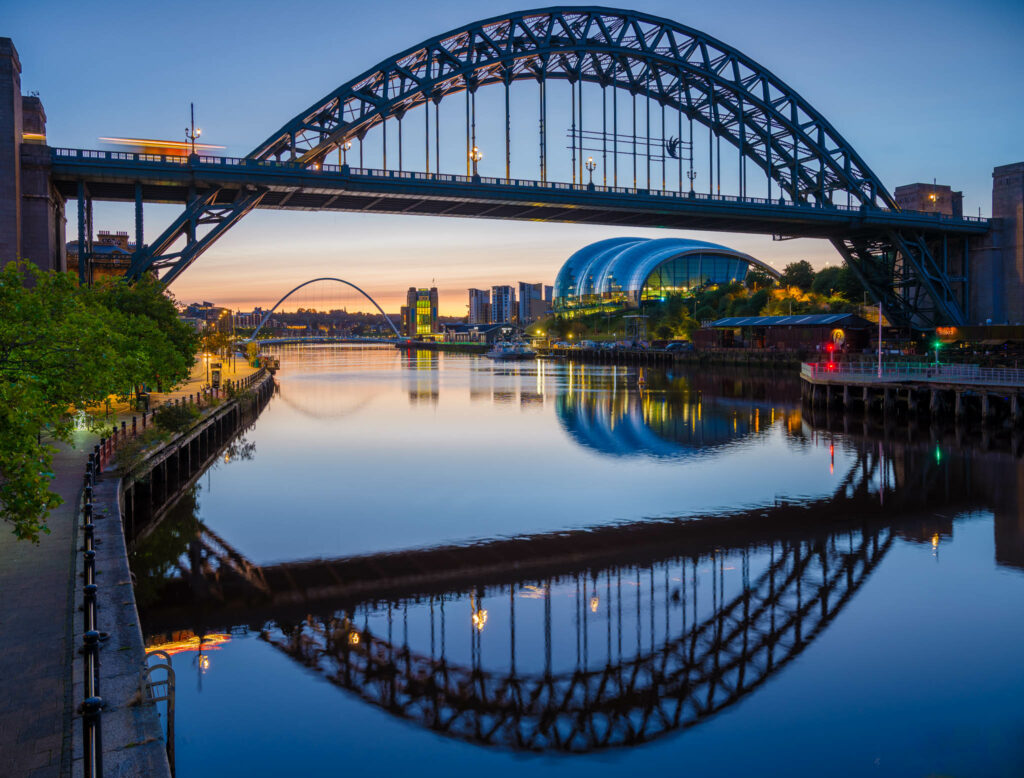
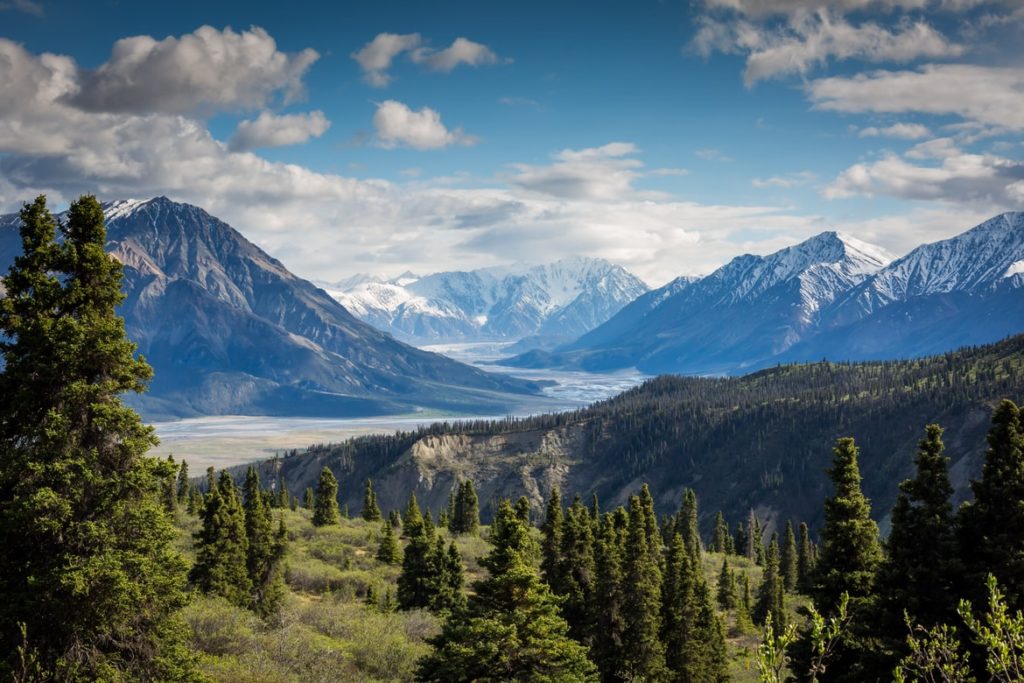
11 Comments
Nice article. It has been raining here most of the last three months and everything is a bog. Mud will do just as much damage as rain, and they tend to go together.
Thanks so much for these tips!! I was shooting as it was snowing and never thought about shooting through a ziplock bag. Great advice!! 🙂
Using silica bags in a great tip! I had never thought of that. So simple, haha
Placing Silica Gel in your camera bag is a great way to prevent both condensation on the lens and damage in the form of corrosion due to long term moisture exposure. It is best to use fresh Silica Gel and replace it when it becomes fully saturated. http://www.silicagelpackets.com is where I get my packets to use with my cameras and lenses.
Good advice! I'm in New Orleans and we deal with rain all the time (sub-tropical, you know!). Some additional tips are over at my blog in a post I wrote last summer, you might want to check it out!
Andrew
TheDiscerningPhotographer
Good advice! I'm in New Orleans and we deal with rain all the time (sub-tropical, you know!). Some additional tips are over at my blog in a post I wrote last summer, you might want to check it out!
Andrew
TheDiscerningPhotographer
Nice video. Thanks for posting it.
Thanks for sharing that Andrew – good stuff.
One other point on the snow/wet weather shooting as well as letting your equipment dry it is essential to let it warm up completely as a cold camera sucks up condensation. Avoid changing media and lenses until at room temperature. saturated Silica gel can be dried and reused if gently toasted.
Thanks for these tips. I’ve always thought of the rain as a place to capture some of the most stunning views. Rain is a bit like snow in that renews and canvasses whatever it touches, investing everything with new life.
Since I have owned my Fuji Finepix S1800, I have found a reason to like cloudy days. I get great pictures then. But always avoided the rain. Thanks for the tip with the zip lock baggies. I can go out in the rain now and enjoy that too.